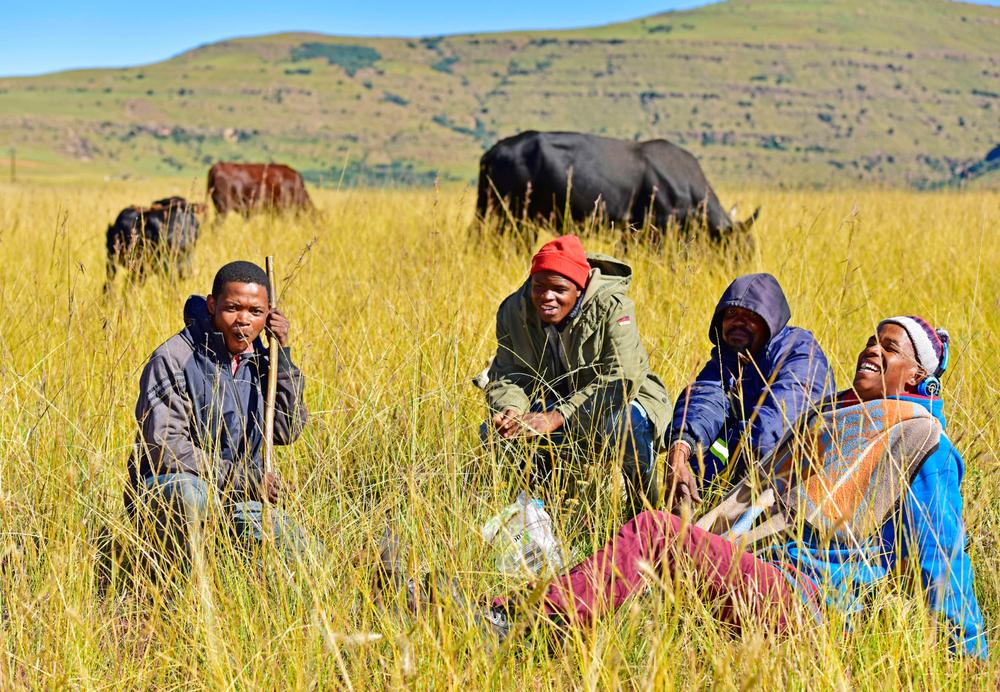Editor’s note: On April 18, Conservation International will release its new virtual reality film “My Africa” at the Tribeca Film Festival in New York. The film tells the story of a young Samburu woman in Kenya whose community is working to save elephants, reknitting an ancient coexistence between people and wildlife. In anticipation of the launch, Human Nature is highlighting stories about the people, places and wildlife of “My Africa.”
Kruger National Park in South Africa is as far from the northern plains of Kenya as New York is from Utah. And yet the two places share a common challenge: how to conserve wildlife while delivering justice to communities.
Last year, I traveled to South Africa to report from the villages outside Kruger National Park. These communities reflect a legacy of deep injustice. Here’s one example:
Today, the South African village of Dixie still bears the name of a place that no longer exists. Squeezed between two connecting fence lines, the town now occupies a sliver of communal rangeland, hemmed in by wildlife reserves on two of its three sides. Yet, the name Dixie refers to a more marginalized place still: The original village, kilometers to the north, was subsumed into a wildlife reserve years ago.
Responding to visitors who wanted what they imagined to be an authentic African experience — a wild land unmarred by people — land owners forcibly moved the villagers and their livestock. According to community stories, residents were given a week to move their entire village, walking back and forth across the savanna carrying their possessions by hand.
Stories like Dixie’s are common in the communities that border Kruger National Park. One of Africa’s first protected game reserves, Kruger was also one of the continent’s earliest contributions to the troubled global history of forced indigenous removal from conservation areas.
This inequity continues to this day in the form of daily threats from wildlife. According to Mike Grover, senior landscape manager at Conservation South Africa, attempting conservation in this area without first addressing this history has proven impossible:
In communities where most residents have never seen the inside of the nature reserves that abut their villages, the concept of wildlife protection often holds little value.
“For them, there is no benefit to living close to a wildlife area,” Grover said. “If anything, there is only a negative.”
On top of dealing with poachers and anti-poaching operations, residents must periodically look out for escaped predators, farmers must defend their crops from raiding baboons, and ranchers must contend with disease transmission from the park’s buffalo herds to their cattle.
In these villages, the entirety of a family’s wealth may be in the form of cattle. Defending a herd therefore takes on the same urgency as defending a bank account.
Grover recalls the response he got when he first asked a community elder for assistance in countering the growing poaching threat. “When you value our cattle,” the elder said, “then we will value your rhino.”
The solution? It’s complicated. But what’s clear is that top-down interventions don’t work in the long run. The first step, according to Julia Levin, senior director at Conservation International, must be to listen to community priorities:
“The process has got a lot to do with listening, finding ways to unlock local leadership that already has a vision for the community, and understanding what capabilities already exist,” Levin said.
Levin would like to see the communities of the biosphere shift away from unsustainable use of the land to a system more in balance. For Levin, it is less about pursuing particular projects or building certain facilities, but rather knowing how to understand and unlock local capacity to care for their environment.
“If you trust community members to really have a deep sense for what is really needed and to support them to achieve it, the most amazing work bubbles up.”
There’s more work to be done in the villages outside Kruger National Park. But even at this stage, the approach is promising. The project illustrates a trend in African conservation that can be seen in successful projects from South Africa to Kenya and beyond. Saving wildlife is no longer solely about fences or rangers or green polygons on the map. It’s about justice and equity and common benefit. To me, that’s really exciting.
Read the whole series on South Africa »
“My Africa” was produced with the support of The Tiffany & Co. Foundation and in conjunction with Passion Pictures and Vision3. Additional support for distribution was provided by glassybaby.
Jamey Anderson is a senior writer at Conservation International.
Want to read more stories like this? Sign up for email updates. Donate to Conservation International.
Further reading
